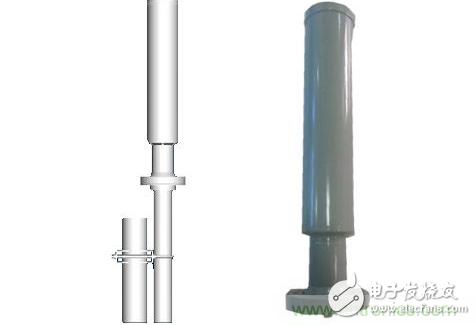
Privacy statement: Your privacy is very important to Us. Our company promises not to disclose your personal information to any external company with out your explicit permission.
Recently, Nature News published an article describing a new antenna design scheme, which shows that it will be able to produce an antenna that is one hundred times smaller than current small antennas. The new miniature antennas can be used in the future for wireless communications, Internet of Things, wearable devices, smartphones, and more.

Figure, current small antenna products
At present, the existing small antennas are all based on electromagnetic resonance, so the size of the antenna needs to be based on the wavelength of electromagnetic waves. In reality, the antenna length must be at least one tenth of the wavelength. Further miniaturization of the antenna has been an open problem in the past decade.
The new ME antenna (small than one-thousandth of the wavelength) is designed to achieve 1-2 orders of magnitude reduction on the most advanced small antennas, and the performance has not decreased.
Breakthrough point electromagnetic resonance and acoustic resonanceAntennas based on the conversion between alternating current and electromagnetic (EM) wave radiation have been widely used in smartphones, tablets, radio frequency identification systems, radars, etc., and such electromagnetically coupled resonant wave technology limits the size of existing antennas. Further shrinking, especially at very high frequencies (VHF, 30-300MHz) and ultra high frequencies (UHF, 0.3-3GHz).
Therefore, the antenna given in the paper is an acoustically braked nanomechanical magnetoelectric (ME) antenna with a suspended magnetic/piezoelectric film heterostructure, which is received by the ME effect at the resonant frequency of the acoustic signal of the film. And emit electromagnetic waves.
Specifically, the acoustic wave in the ME antenna stimulates the magnetization oscillation of the ferromagnetic film, causing the electromagnetic wave to radiate, and vice versa. These antennas induce the magnetic field of the electromagnetic wave to generate the output of the piezoelectric voltage.

We all know that the higher the frequency, the shorter the wavelength and the shorter the antenna. But as the frequency increases, so many problems will arise.
The new antenna here uses a magnetic/piezoelectric heterostructure. At low frequencies, its strain-mediated strong magnetoelectric (ME) coupling effect has been proven to make energy transfer between magnetism and electricity more efficient.
However, some scientists have suggested that the structure is strongly coupled at low frequencies, that is, energy transfer is very effective. Does it also mean that strong ME coupling in the radio frequency (RF) dynamic process can be realized in the structure? If possible, a new electromagnetic wave transceiving mechanism can be used to radiate electromagnetic waves to produce an acoustically actuated nanoscale ME antenna.
However, in addition to the low frequency of several kilohertz, there is a strong interaction between sound waves and magnetization, which is also limited by static or quasi-static processes. And here is the dynamic process of RF, the difficulty is self-evident.
Implementation and verificationIn order to effectively solve the two limitations, the researchers conducted a large number of analysis and experiments, and made many details on the basis of the existing antenna. There are mainly the following aspects:
In the device selection, a high-resistivity silicon wafer was used as the substrate of the antenna device in the experiment; in the magnetic multilayer deposition of the thin film structure, the researchers specifically indicated that the FeGaB layer was deposited by RF sputtering using an Al2O3 target, in which the deposition rate was required. The X-ray reflectance was calibrated; in addition, the researchers measured and analyzed the admittance amplitude of the antenna resonator and measured the electromagnetic induced voltage at different frequencies using a VHF lock-in amplifier.
In addition, in order to solve the limitation of high-frequency dynamics, the researchers have tried two structures, respectively, using a nanoplate resonator (NPR) and a film bulk acoustic resonator (FBAR).
In the experiment, the research team analyzed the response of the two electromagnetic structures. Using the FEM software, COMSOL MulTIphysics V5, considering the coupling between the magnetic field and the electric field in magnetostrictive and piezoelectric isomerism. .1 simulate the two structures separately and analyze the frequency response of the simulation module, so that two different electromagnetic structures can emit different frequencies.

 to sum up:
to sum up: The small ME antenna mainly transmits and receives signals based on the magnetoelectric coupling effect under acoustic resonance or electromagnetic resonance, and since the wavelength of the acoustic wave is much smaller than the wavelength of the electromagnetic resonance, these ME antennas are much smaller than the most advanced electromagnetic resonance small antennas.
In the experiment, the research team has tried the design based on NPR and FBAR structure. In the future, this new small antenna will be designed in a variety of different configurations to achieve a variety of operating frequencies such as VHF (60MHz) and UHF (2.525GHz).
In addition, NPR and FBAR-based antennas can be fabricated on the same silicon wafer by the same manufacturing process, which means that tens of megahertz wide-band ME antenna arrays can be integrated onto tens of GHz chips.
In the future, this miniature antenna is expected to be used in many fields such as wireless communication, Internet of Things, wearable devices, and smart phones.
November 16, 2024
November 14, 2024
September 18, 2023
June 28, 2024
June 28, 2024
この仕入先にメール
November 16, 2024
November 14, 2024
September 18, 2023
June 28, 2024
June 28, 2024

Privacy statement: Your privacy is very important to Us. Our company promises not to disclose your personal information to any external company with out your explicit permission.

Fill in more information so that we can get in touch with you faster
Privacy statement: Your privacy is very important to Us. Our company promises not to disclose your personal information to any external company with out your explicit permission.